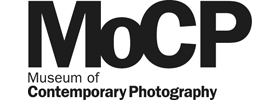Consuming Nature
Naoya Hatakeyama » Dan Holdsworth » Mark Ruwedel » Toshio Shibata »
Exhibition: 11 Dec 2003 – 19 Feb 2004
The Museum of Contemporary Photography
600 Sth Michigan Av
IL 60605 Chicago

MoCP The Museum of Contemporary Photography
600 Sth Michigan Ave
IL 60605 Chicago
+1-312-6635554
Mon-Fri 10-17 . Sat 12-17
Few themes have inspired artists more than the dialectical relationship between nature and man. In Western art since the late eighteenth century, the romantic notion of the sublime competes for space with the spirit of human endeavor. On one hand, humans are weak and in awe before the power of nature, and on the other, they are energetic and domineering builders, diggers, and settlers. Civilizations grow and intrude upon nature, relying on her bounty. Then they peak and decline, leaving few marks, and nature reclaims its own. The process cycles on, perhaps hastened by contemporary technology, serving as a constant reminder of the durability and fragility of both nature and mankind. This exhibition explores the work of four contemporary photographers concerned with how nature and man challenge and consume each other. Mark Ruwedel (United States, born 1954) records the evidence of both prehistoric and contemporary cultures that have left visible marks on the earth’s surface. Toshio Shibata (Japan, born 1949) documents how man attempts to control nature with artificial structures. Naoya Hatakeyama’s (Japan, born 1958) photographs extractive industry in Japan, a country with few natural resources. And Dan Holdsworth (United Kingdom, born 1974) explores the always deceptive nature of landscape photography with images of the Vatnajokull glacier in Iceland. Photography seems particularly well suited to document the oscillation of human celebration of nature between religious temple and mining district. Perhaps because, unlike painting, the camera must deal with what is in front of it, the record of these two human responses to nature is peculiarly amoral. In the latter half of the nineteenth century, Carleton Watkins had no qualms about photographing the sublime grandeur of the Yosemite Valley one week, and the massive human destruction of the gold mining district in the upper Sacramento Valley the next. Similarly, the artists in this exhibition avoid either simple, ecologically correct, or romantically sublime statements about nature or man. They prefer to observe a more complicated exchange.